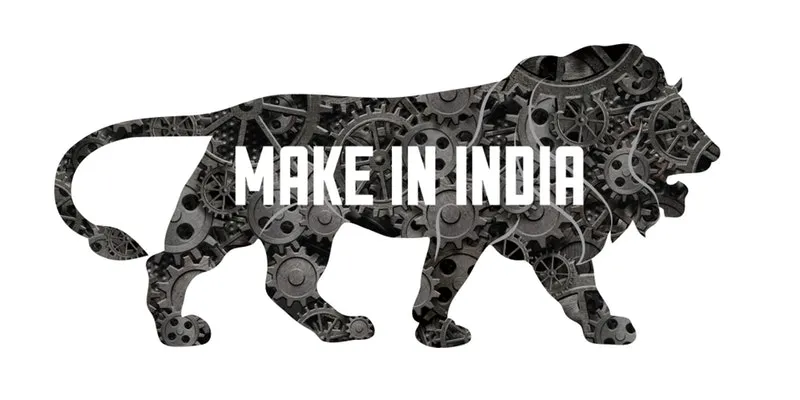Why Panasonic Corporation wants to make India an export hub and manufacturing superpower
Panasonic India makes 45 percent of its revenues by selling ACs and home appliances. Now it wants to focus on local manufacturing and enabling exports from India.
India’s massive GDP contraction (-23.9 percent) in Q1 2020 has put the spotlight on domestic consumption. While many sectors have taken off during the pandemic, some like manufacturing, appliances and consumer durables have been severely dented with people cutting down on their discretionary spends.
Now, ahead of the festive quarter that begins in October, the government along with PSUs and private sector companies are deliberating on ways to revive consumer demand, ramp up local manufacturing and supply chains, and put India on the path to economic recovery by 2021.
To talk about all this and more, Manish Sharma, Executive Officer, Panasonic Corp and President & CEO, Panasonic India & South Asia joined YourStory Founder & CEO Shradha Sharma.
Manish has had a ring-side view of the consumer durables industry for almost 25 years, having led teams at LG Hotline, Samsung, and Haier prior to joining Panasonic in 2008. He's also an industry voice, and presently serves as the Co-chair of FICCI’s Electronics & White Goods Manufacturing Committee.
During the conversation, Manish touched upon Panasonic’s key business verticals, India operations and growth plans, unlocking demand, scaling up local manufacturing, and reducing India’s dependence on China for imports.
Watch the full conversation here:
He shares that “placing India in the global supply chain ecosystem” of Panasonic Corporation is “first and foremost” on his agenda.
He explains,
“Panasonic no longer considers India as an opportunity or as a market. It considers India as a capability. This means that we are looking at utilising India to provide IT services for other subsidiaries of Panasonic. We recently set up our India Innovation Centre in Bengaluru. It is developing platform solutions that can service the world. We are also looking to export human resources from India to other subsidiaries of Panasonic, and seeing how we can fit ourselves to the country’s development agenda.”
Besides ‘Capability’, he also mentions ‘Character’ and ‘Consistency’ as the 3Cs that make up Panasonic’s organisational mantra. “We follow this to evolve and catch up with a dynamically changing environment. It also eliminates the efficiency losses which would have happened otherwise,” he states.

Image: Shutterstock
ACs and other verticals in focus
Manish highlights that Panasonic, which began as a manufacturer of bulb sockets in Japan in 1918, is way more than just an appliance-maker.
He says, “We have diversified operations that go beyond just consumer durables and home appliances. And now in the era of digital convergence, we are looking to further diversify our business interests. One of the tasks at hand is to bring solutions that can help solve the modern problems of society.”
Some sectors in focus are clean energy, smart living solutions, and IoT-enabled software platforms.
Manish elaborates,
“How do you make the lives of people within their homes more convenient, comfortable, energy-efficient, and safe? We want to build capabilities on that front. Storage technologies are going to change the way things happen. Currently, we are into supplying batteries for critical applications, data centres, telecom operators, ATMs (Automated Teller Machines), etc. We want to provide software, data storage, and energy storage solutions together.”

Photo: YS
Globally, Panasonic Corp operates 39 subsidiaries across B2B and B2C verticals, including energy storage, wires, switches, fans, geysers, smart retail solutions, IoT-enabled devices, logistics and supply chain, etc. Almost 78 percent of its global revenues come from B2B operations.
In India, however, B2C commands a larger share at 45 percent, with air conditioners pocketing a majority of the sales. “We have really good innovations in ACs. The intention is to make them available for people at large,” he says.
Panasonic has outlined a plan to ramp up local distribution and supply chain mechanisms to increase category penetration in India.
He shares, “AC penetration in India is less than 5 percent. We consume roughly 7.5 million ACs every year. Even if one more household owns an AC, it adds to the market penetration. Contrast this with China, which manufactures 110 million ACs per year, and exports close to 60 percent of that capacity.”
Making India an export hub
Panasonic’s goal is to turn India into an export hub to reduce its dependence on China for imports. “India is in a position to not only unlock consumer demand but also look at backward integration. Once you start to scale up, you can manufacture all the components locally,” explains the CEO.
He believes that sectors like consumer durables, appliances, beauty and lifestyle products have a huge potential to “scale up within India”. This is driven not only by the large urban markets but also by the smaller towns.

Image: Shutterstock
“Therefore, we are now aligning our strategy with this. We recently initiated a new function called Bharat Marketing to create a clear and focused approach for different market opportunities,” Manish reveals.
He states that Panasonic has core capabilities in manufacturing that have sharpened over the last 100 years. “With our rich experience in manufacturing, we have accumulated massive learning and also created IoT-based solutions for smart manufacturing,” he says.
Panasonic also plans to focus on supply chain and logistics, especially in Bharat, to eliminate the waste generated and curb the loss of efficiency when goods and raw material are in transit.
“In small towns, it is more about dealing with distributors and traders, ensuring the right supply chain is in place, and having efficient demand forecasting. Many below-the-line activities will also be needed to reach out to consumers to create more awareness about our products," Manish explains.
Localising ‘products and people’
Panasonic India believes that the public-private-partnership model could give a fillip to local manufacturing in India and enable exports from the country.
The government should take the lead by executing big-ticket initiatives to “add credibility and confidence” to the ‘Make in India’ tag. “Because incremental initiatives or actions may not result in large capacity creation,” Manish says.

Manish Sharma, President and CEO, Panasonic India & South Asia
For India to become a manufacturing superpower, every stakeholder needs to be aware of their role. Panasonic believes that the phased manufacturing programme proposed by the government will play a major role in this.
Manish explains,
“If the policy environment is more transparent, investments can be planned in an efficient manner in subsequent years. MNCs will have to play a major role because their access to technology is far more. They need to bring their capabilities to India and utilise the current environment.”
He alludes to Maruti Suzuki and the auto revolution it triggered in India decades ago. Result of an Indo-Japanese MNC (Multinational Corporation) partnership, it “shook up” and revolutionised an entire industry.
Manish says, “Maruti was a great learning. We need that kind of approach in other large sectors too. Energy storage can be one; component manufacturing can be another focus area. We need to identify the sectors, and industry and government have to come together to drive this.”
What works for India is the abundant availability of talent in the market. Panasonic believes that Indians are some of the “smartest people on the planet”.

'Industry and government have to come together to make India a manufacturing superpower'
Manish observes, “We have proven this in IT and various other sectors. We possess a lot of skills. An upgradation of those skill sets aligned with the requirement is just a matter of time. Also, skill is something that can be built or acquired. However it is important to provide that opportunity to people.”
That opportunity could also come in the form of MNCs training local talent.
Manish recalls his time at LG Hotline when a bunch of Korean expats had helped locals set up a cathode ray tube manufacturing facility in India. “They trained us in the skills that were needed to run one of the most complex manufacturing processes. It took us only three to four months and a couple of visits to Korea to get trained, and run the entire show by ourselves,” he says.
This “localisation of products and people” can happen in 2020 too, especially, in sunrise sectors that need attention in the aftermath of the pandemic. (Sunrise sector or industry, simply explained, is a term used for flourishing sectors or businesses that are in its infancy but show promise of a rapid boom.)
Manish sums up by saying, “Leaders have to ensure that they provide an environment which is full of empowerment, wherein people can explore and exploit their capabilities. One of our mid-term goals is to ensure that we create future leaders within the organisation so that they are ready to take up challenges and help Panasonic reach a point it deserves.”
Edited by Ramarko Sengupta











